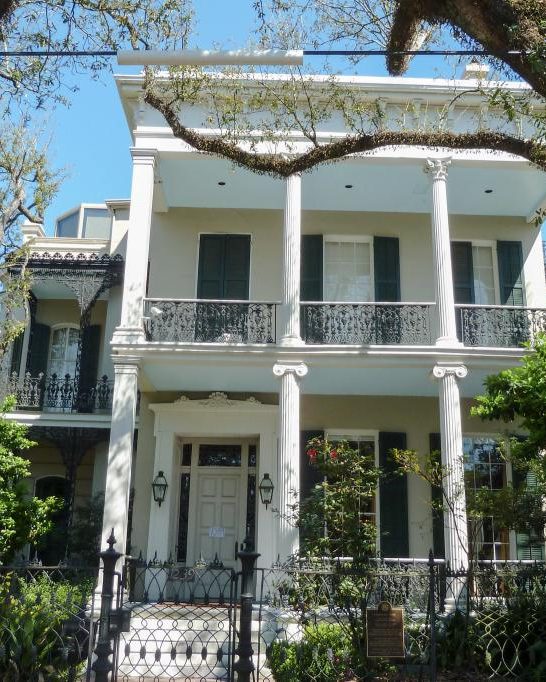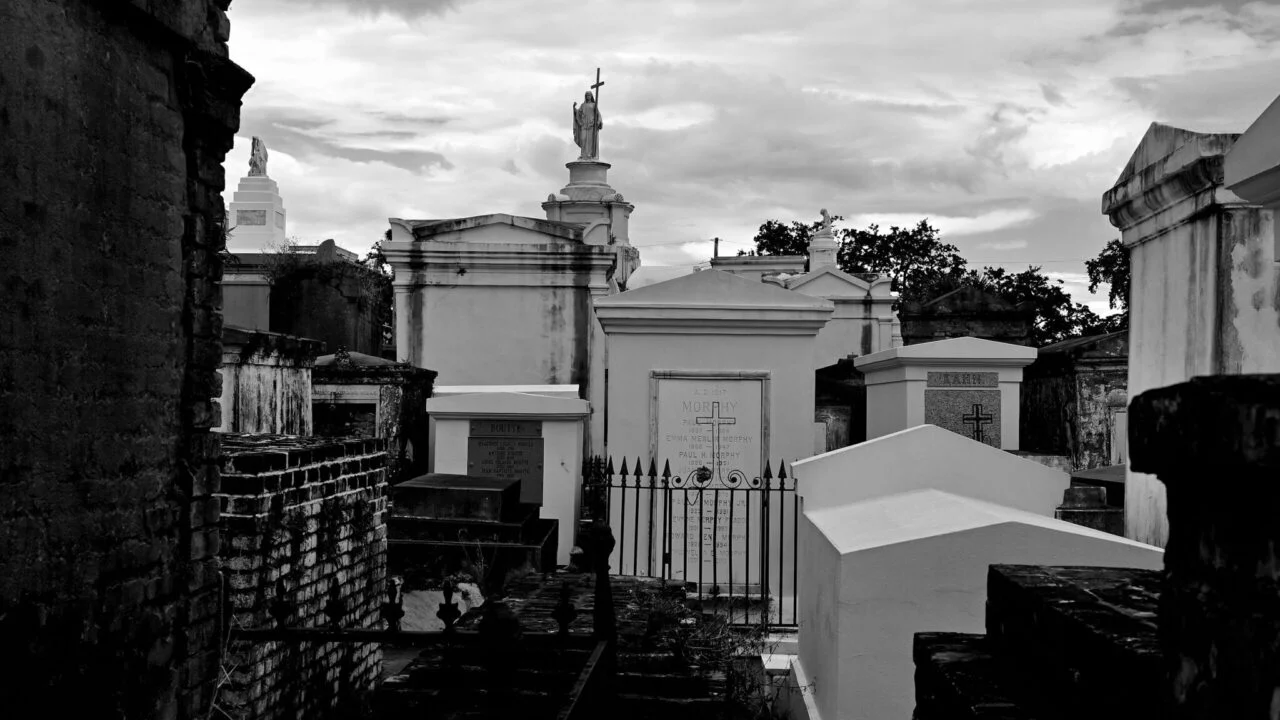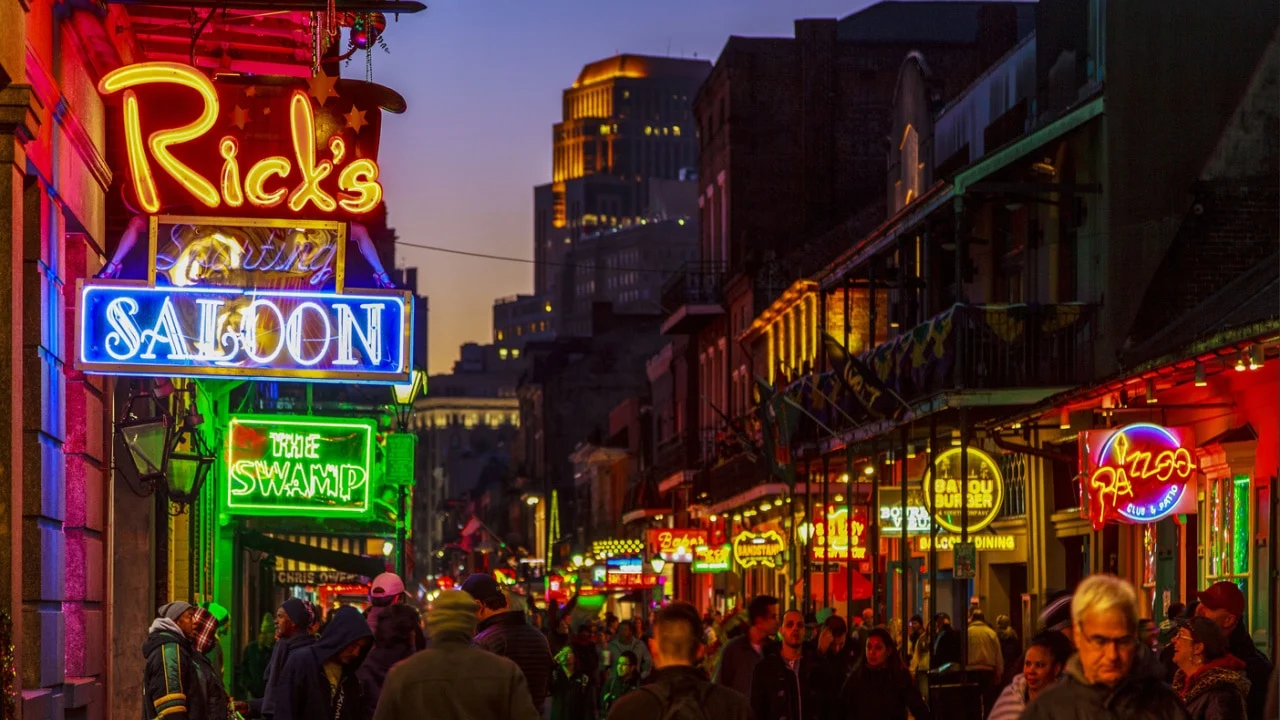For fans of Anne Rice’s The Witching Hour, the Garden District New Orleans conjures up images of some of her most iconic stories.
“The doctor had never been inside an antebellum mansion until that spring in New Orleans. And the old house really did have white fluted columns on the front, though the paint was peeling away. Greek Revival style, they called it�a long violet-gray townhouse on a dark, shady corner in the Garden District, its front gate guarded, it seemed, by two enormous oaks. The iron lace railings were made in a rose pattern and much festooned with vines�purple wisteria, the yellow Virginia creeper, and bougainvillea of dark, incandescent pink.” Anne Rice, The Witching Hour.
What the author is describing here is her own house in the Garden District, and it’s one of the places that tour groups often stop and stare in awe at the now privately owned residence. This style of house is not a rarity in this area, and it’s all part of what you’ll experience on a walking tour.
A Short History of the Garden District New Orleans

In 1803, Napoleon Bonaparte sold Louisiana to the Americans, and in 1812, it entered the union, becoming the 18th state. After this time, Anglo-Americans started to populate the area, so they needed land. The area known as the Garden District was once a large sugar plantation known as Livaudais. In 1832 the land was sold and divided to make way for the mansions that line the streets still. This area stretches several blocks to the west of the French Quarter past Canal Street. It became the City of Lafayette in 1833 before merging with New Orleans in 1852.
Architecturally, the Garden District unfolds its history across five periods, from the 1840s construction boom to sporadic developments in the last century. Its urban form showcases houses on double lots with ornate cast iron fences and a mix of architectural styles�from Greek Revival two-story mansions to more modest shotgun cottages in the late 1840s and then Queen Anne and Eastlake styles from 1873 to 1910. The properties are shaded from the heat and humidity of a New Orleans summer by large living oak trees that line the streets.
Garden District Walking Tour
While guided tours are on offer, if you’d prefer a more leisurely pace without the crowds, you can map out your own tour. If you can, avoid traveling to the area in July and August, as the heat and humidity make it unpleasant walking weather. The other thing to remember is that the sidewalks easily fall into disrepair due to the poor soil conditions and low elevation that the roads have been built on. Therefore, make sure you look out for uneven ground and navigate around it.
St. Charles Street Cars

If you’re staying in the French Quarter, the no. 12 St Charles Streetcar will take you over to the Garden District. This experience should be part of your tour. This historic streetcar is the oldest continuously operating line in the world, starting in 1835. Get off at the corner of Washington and St Charles Street. There are a few options for fares. You can download the Le Pass app from the Regional Transit Authority and pay for and display your tickets for the bus, streetcar, or ferry. If you’d rather pay with cash, each streetcar trip costs $1.25 in exact change.
Lafayette Cemetery No. 1

This is the best place to start your Garden District New Orleans tour. While exploring a cemetery might seem a bit grim, the history of this place will leave you in reverent awe. Founded in 1833, the above-ground crypts house 500 wall vaults and 1,100 family tombs. The wall vaults serve the purpose of temporary accommodation for the deceased until space becomes available in the family tomb or a cheap resting place for a group of people who don’t own a family spot.
The resting places of the initial settlers in this region lie within the family crypts. Despite the dilapidation of numerous 19th-century structures, their decay exudes an undeniable beauty, resembling miniature historical houses adorned with columns. The cemetery not only served as inspiration for Anne Rice’s literary works but has also played a prominent role in various films and TV series, including The Originals, Interview With The Vampire, and The Mayfair Witches. For more information on the various tombs, you can take a free walking tour with informative guides. A minimum tip of about $10 per person is suggested.
Commander’s Palace
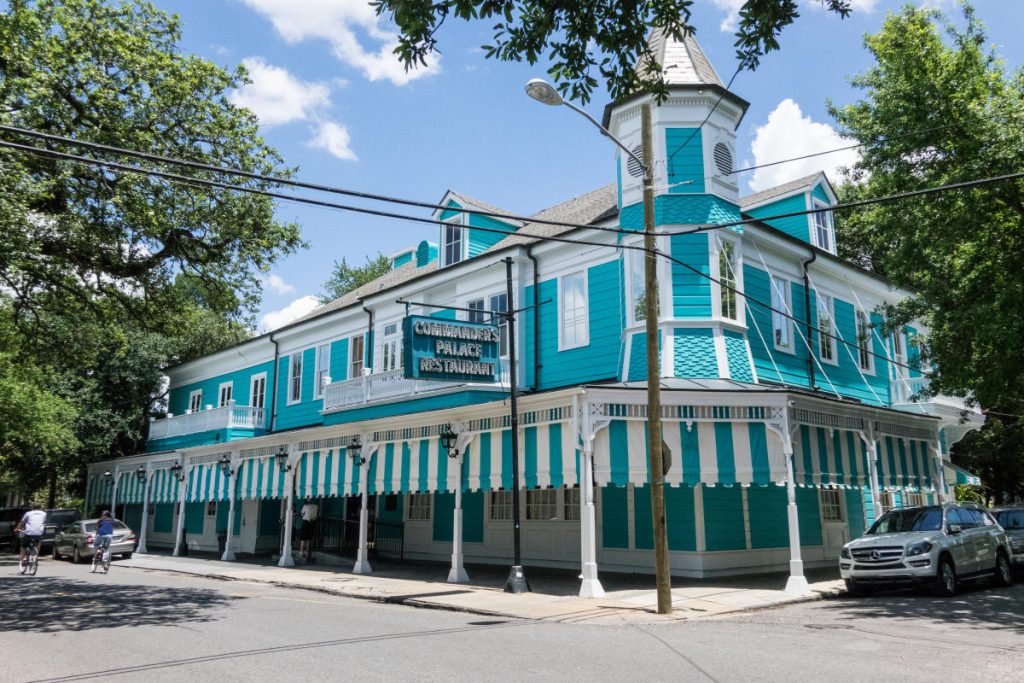
Coming out of the cemetery’s main gates, you’ll see the prominent blue-striped building on your right. This is the famous New Orleans restaurant Commander’s Palace. First established in 1893 as a saloon by Emile Commander, it is now a fine-dining restaurant beloved by locals and tourists alike.�
The cuisine is described as Haute Creole and boasts a range of award-winning chefs. Recommended dishes include the Pecan Crusted Gulf Fish, Mardi Hog, and the Strawberry Salad. If the food here isn’t your thing, the exterior of the building is a great photo opportunity as you continue your tour.
Magazine Street
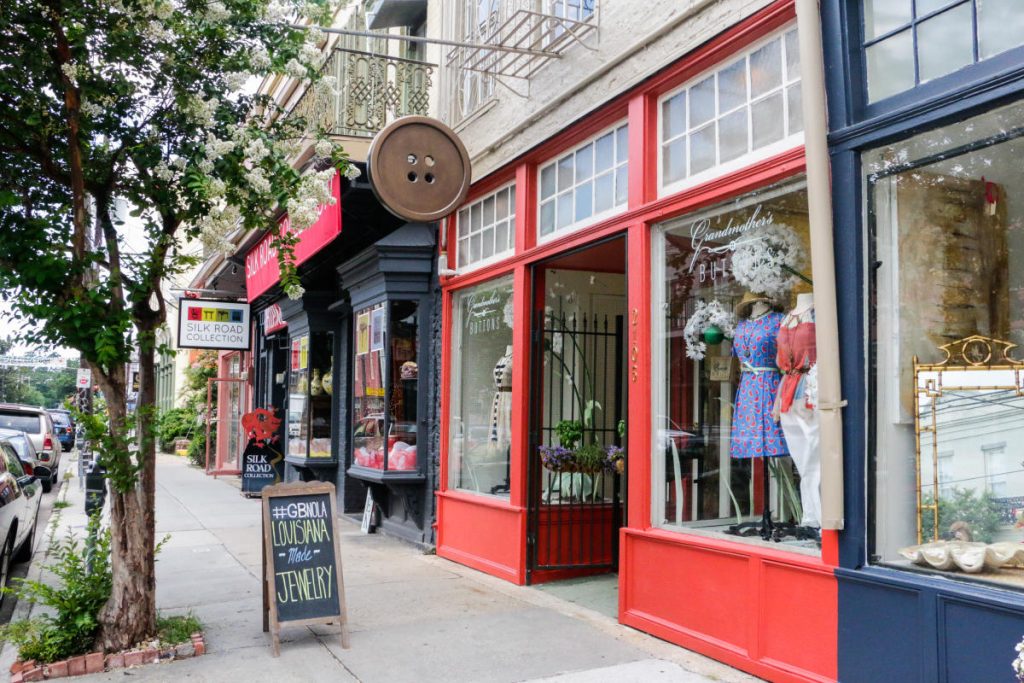
If you continue south down Washington Ave, you’ll come across Magazine Street. This street runs six miles through the Garden District and towards the French Quarter. This is a great hang-out spot for people watching from the cafes and bakeries that line the street or for browsing vintage stores and other boutique shops.
Notable Houses of Garden District New Orleans
Continuing east down Magazine Street, turn left at First Street. Several blocks up at 1239 First Street, you’ll find Anne Rice’s old house, dating from the 1880s. The home inspired the story of the Mayfair Witches. Further up First Street at 1331, you’ll find an example of Italianate style in the Morris Israel House. For football fans, the former New Orleans Saint player, Archie Manning owns a house at 1420.
Turning right into Prytania Street, you’ll see the oldest still-standing residence, which was built in 1838 at 2340. Across the street, an example of Second Empire-style architecture is the Louise S. McGehee School. The building dates back to 1872. Continuing back west, you’ll find the notable Opera Guild House at 2504, the beautiful Our Mother of Perpetual Help building at 2523, and the only example of Gothic Revival architecture in the Garden District, which was built in 1854.
Garden District Bookshop and the Chicory House Coffee Shop

You’re now back at the start near the Layfayette Cemetery. This stop makes the perfect place to end your Garden District tour. The bookshop is located in a building originally built as a roller skating rink in 1884, known as The Rink. This independent bookshop is a great place to while away some time browsing through their reading selections, bringing kids to storytime, or attending a book signing. Anne Rice was famous for often having signings here.
At the front of The Rink, you’ll find The Chicory House, which opened in 2022. It’s a great stop for brunch, afternoon tea or lunch. Menu items include New Orleans’s famous chicory coffee, salads, and hot sandwiches. They also serve beer, wine, and canned cocktails. The coffee house is closed on Tuesdays.
